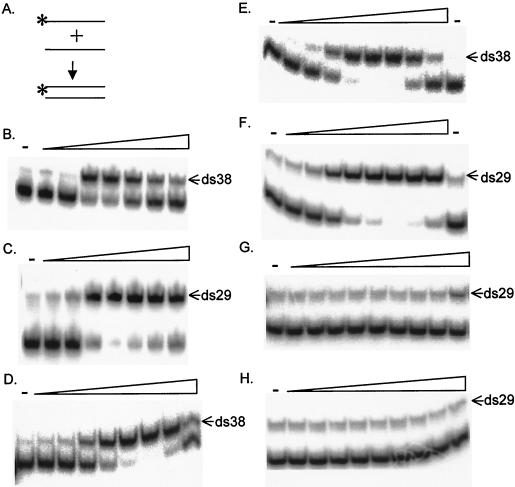FIG. 2.
ORF1p accelerates annealing of complementary DNA oligonucleotides. (A) Schematic of the annealing assay. The asterisk indicates the 32P end label, here and throughout the figures. (B to H) Phosphorimages of oligonucleotides separated by electrophoresis. Increasing amounts of protein are indicated by triangles in panels B to H, and a dash above a lane indicates that no protein was added. The double-stranded oligonucleotide is indicated by the arrow; the other band is the single-stranded, end-labeled oligonucleotide, based upon the migration of known standards through the same or similar gels. For panels B and C, a 1.8 nM concentration of labeled oligonucleotide and a 2 nM concentration of its reverse complement were incubated with threefold serial dilutions (0.34 to 250 nM) of E. coli TF-type ORF1p. For panels D to H, 150 pg of each oligonucleotide was incubated with threefold serial dilutions of baculovirus-produced TF-type ORF1p (0.3 to 639 nM) (D), A-type ORF1p (0.5 to 1,100 nM) (E and F), lambda repressor (0.13 to 820 nM) (G), or BSA (0.45 to 3,000 nM) (H).

